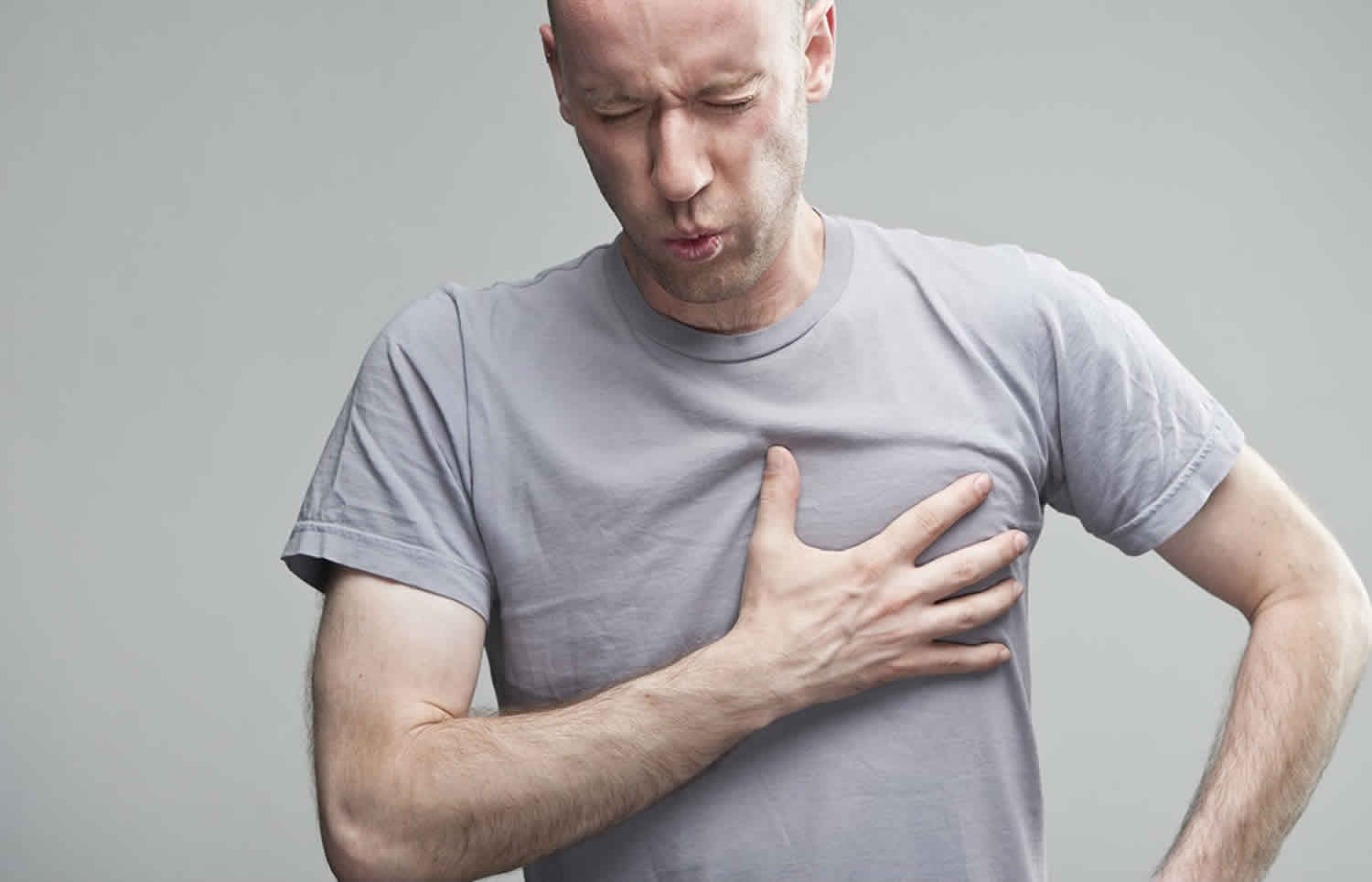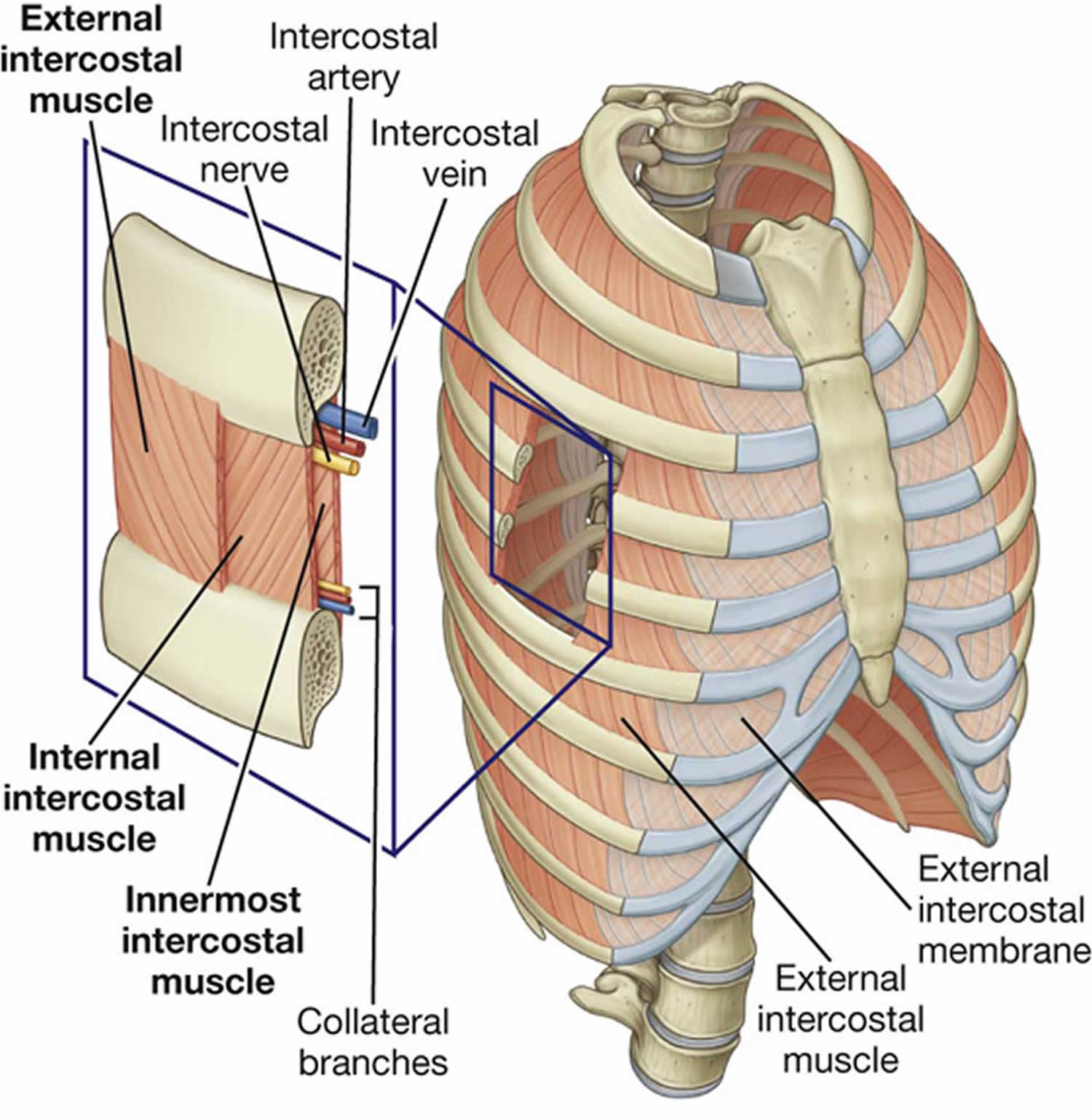Intercostal muscle strain
Intercostal muscles are the muscles between your ribs. Intercostal muscles allow your ribcage to expand and contract so you can breathe. But if they stretch too far or tear, intercostal muscle strain is the end result. Intercostal muscle strain is an injury affect the muscles between two or more ribs. You can strain the intercostal muscles suddenly or by doing certain movements over and over. Intercostal muscle strain is one of the most common causes of musculoskeletal chest pain. But age or a sedentary lifestyle can place you at higher risk. Someone who’s older with thinner muscles could strain rib muscles a lot easier than someone who works out and has built up their muscles.
Common causes of intercostal muscle strain include:
- Coughing.
- Exercises or sports with repetitive movements, twisting, lifting or stretching.
- Injuries to the chest from a fall or hard hit.
- Twisting beyond your normal range of motion.
Breathing can be painful, especially deep breaths. But what muddies the picture is that sometimes, painful breathing can be a sign of something serious, such as pneumonia or a blood clot in the lung. So you’ll need see you doctor to make sure there isn’t something more serious is going on, such as rib fracture or even cancer than to assume it’s just intercostal muscle strain.
Intercostal muscles consist of three layers of muscles external, internal, and innermost layer they combine to fill the space between the ribs (Figure 1). External intercostals muscle are the outermost layer lies directly under the skin originate from the lower border of rib above run obliquely and insert into the upper border of the rib below. It expands the chest wall during inhalation. Internal intercostals the intermediate layer originate from the costal groove near the inferior border of the rib above to the upper border of the rib below, help to collapse the lung during expiration. Innermost intercostal muscles, cross more than one intercostal space, and assist the internal and external intercostals in their function.
Intercostal muscle strain healing depends on the severity of the injury, the time range from a few days to 8 weeks in the majority of cases and in some cases lasts longer other last longer cause upper back pain. The first advice for the patient is resting for a few days and apply ice back in the first two days of pain to eliminate the inflammation.
Holding a pillow to stabilize the injured, painful area during deep breathing and coughing.
Figure 1. Intercostal muscles
How to tell the difference between intercostal muscle strain or pneumonia
Because intercostal muscle strain and pneumonia both cause chest pain, it can be hard to know the difference. But there are some telltale signs:
- Intercostal muscle strain is more tender and painful when you touch the affected area. Pain when you twist or bend over can also be a sign. But these symptoms aren’t a 100% guarantee that it’s an intercostal muscle strain, so still keep pneumonia in the back of your mind.
Other symptoms of an intercostal muscle strain include:
- Pain when you breathe, cough or sneeze.
- Pain when you move the affected muscles.
- Swelling in the area.
- Muscle tightness and soreness.
However, for your health and safety, it’s best that you to avoid self-diagnosis, especially if the pain is severe. You should see your doctor to rule out something more serious, such as rib fracture or even cancer than to assume it’s just intercostal muscle strain.
Intercostal muscle strain causes
Intercostal muscles strain don’t happen usually with daily life activities, it happens when the muscles are weakened, overexertion of muscles, direct trauma from falling or car accident, or blow from contact sports such as hockey, or repetitive torso twisting 1.
- A direct blow to the rib cage: such as falling, car accident, or trauma from contact sports such as football, hockey. In which the intercostal muscles will stretch or tear as ribs are suddenly forced to move apart.
- Twisting the torso: twisting while lifting, twisting from dancing position/yoga posture, and some sports such as tennis, golf. In which the ribs are moved apart from its normal range, excessive torso twisting may occur during sports.
- Reaching overhead: prolonged time of overhead activities or lifting above shoulder place undue stress on the muscles as we can see in painting the ceiling.
- Repetitive forceful movement: such as rowing, hitting a tennis ball.
Risk factors for intercostal muscle strain
- Physical labor: such as activities that include repetitive twisting, prolonged overhead activities, frequent weight lifting.
- High-thrust sports: where there’s repeated use of the arm, shoulder, and upper back that put stress on intercostal muscles.
- Contact sports: when a direct sudden force hits the upper body.
Intercostal muscle strain symptoms
Intercostal muscle strain symptoms vary according to the degree of muscle strain and the intensity and the type of injury.
- Sudden severe pain, in the upper back or rib cage due to a direct blow or sudden impact to the chest or sudden increase in the physical activity.
- Muscle tension and stiffness, muscles respond to injury by tensing up, causing upper back pain and stiffness with movement.
- Gradual worsening pain, pain worsening within days or weeks if the intercostal muscles are still under tension of repetitive, gradual stress. this type is common after sports such as baseball.
- Difficulty breathing, with intercostal muscle strain the breathing pattern will be affected due to pain and it will be a short shallow breathing pattern to avoid pain. That may lead to less blood oxygenation.
- Tenderness of the affected muscles and adjacent ribs.
- Inflammation, a strained muscle may be associated with swelling and increased sensitivity in the affected area.
- Some rare cases swelling of intercostal muscles lead to a blood clot around muscle causing a hematoma 2.
- Pain from intercostal muscle strain increase with coughing, sneezing, or breathing deeply.
Intercostal muscle strain diagnosis
Diagnosis is based on medical history and physical examination.
- Patient history, ask the patient about current symptoms, pain when and how it started, and if there is a history of recent trauma and patient’s physical activities,
- Physical examination, palpation to define the area of tenderness, swelling. Instructions to do active movements of the torso/trunk to know to what extent it affects the function and movement.
Diagnostic imaging X-ray, MRI are not needed for the diagnosis of an intercostal strain, but may be used to rule out the possibility of rib fracture or internal organ injury.
Intercostal muscle strain treatment
While you await your doctor’s appointment, you may want to try these steps to take the pain off:
- Rest: If you were working out hard, rest the area for 24 to 48 hours.
- Brace yourself: If you have a cold, and coughing made you pull your muscle, sometimes taking a small pillow and bracing as you cough helps with the pain.
- Turn up (or down) the temperature: If your pain has started within the day, you can try ice or heat. Generally, with a muscle strain, you should start with ice packs for 10 to 15 minutes a couple of times that day. But let your body tell you what works best.
- Over-the-counter pain relievers. If your kidney function’s OK, and you don’t have an underlying condition, try ibuprofen with food. Acetaminophen may help as well. But get some direction from your doctor first.
Yoga can also help. But sometimes stretching can make it a little worse.
If home remedies and rest aren’t enough, your doctor may recommend:
- An ultrasound device: These wearable devices use ultrasound energy to help you heal.
- Ointments and emollients: Use these under the direction of your doctor because you have to be careful when combining them with heat.
- Physical therapy: This may be the route to take if you’ve been dealing with an intercostal muscle strain for a while. Physical therapists use tools that really help, such as safe stretching exercises and transcutaneous electrical nerve stimulation (TENS) units that they place on you.
Muscle strains of any kind take about four to six weeks to completely heal. But with patience and time, you’ll be pain-free before you know it.
Physical therapy
Physical therapy starts once the inflammation is reduced, it will focus on pain relief modalities, stretching under supervision, strengthening exercises for endurance, improving posture, and breathing exercise.
Breathing exercise, deep breathing exercise patient is instructed to apply diaphragmatic breathing with holding a pillow stabilizing the area of pain.
Stretching, tight muscles can cause muscle imbalance and improper mechanism stretching under supervision within the limit of pain such as roller stretch, some yoga positions, or upper back extension, but if the strain is caused by overstretching of the muscle more stretch may trigger pain and result in muscle weakness and this should be controlled by strengthening program.
Strengthening exercise if there’s muscle imbalance, thoracic extension exercises with breath holding for a few seconds, and breath out slowly and backward weight lifting exercise has shown to improve thoracic kyphosis and decrease intercostal muscle pain.
Intercostal muscle strain prognosis
Most people recover full function following a course of conservative care that includes physical therapy, medication and/or injections. It is important that once the pain and inflammation is reduced, and motion and strength are restored, you gradually return to full activities. Instruction in daily activities or sport performance is helpful for reducing a reoccurrence of an intercostal muscle strain.
References- Gregory PL, Biswas AC, Batt ME. Musculoskeletal problems of the chest wall in athletes. Sports Medicine. 2002 Apr 1;32(4):235-50.
- O’Neal ML, McCown K, Poulis GC. Complex strain injury involving an intercostal hematoma in a professional baseball player. Clinical Journal of Sport Medicine. 2008 Jul 1;18(4):372-3.






